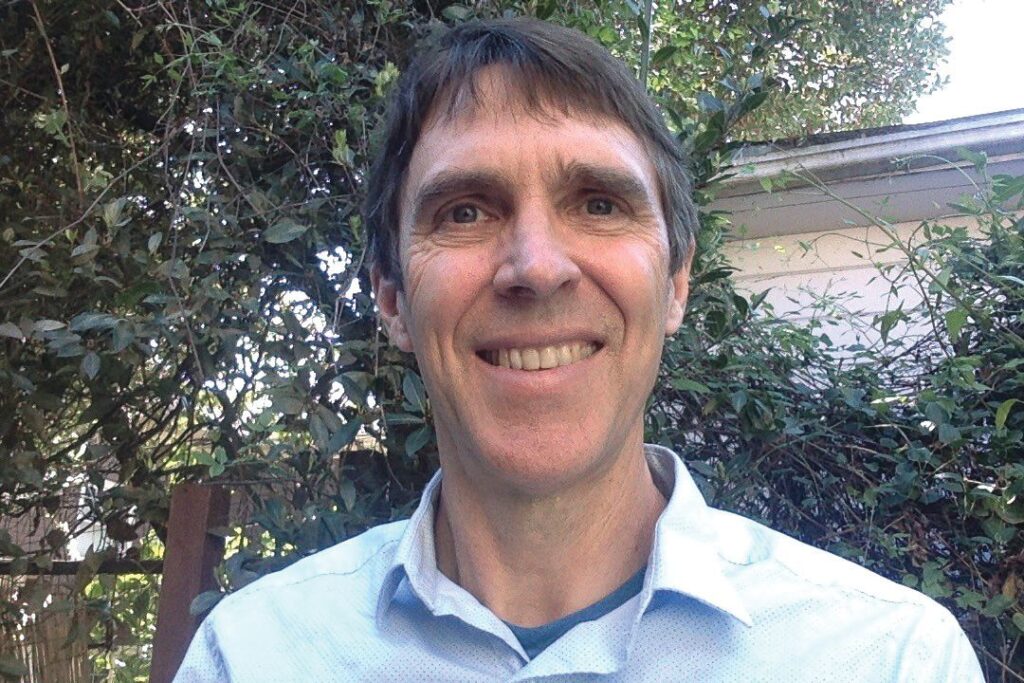Awe as a path to greater resilience for hospitalists

With her grey hair pulled back and wearing her Sunday best, Ms. W. gracefully rose from the chair and approached the hospital bed where her ailing husband rested. She stroked his forehead while he lay silent. I stood as respectfully as possible in the corner of the room, witnessing their love.
“We have had tough times, moving here without a penny from Mississippi, the murder of our son, and your stroke,” she said to him. “God will show us the way as he has before; isn’t that right Henry?” She gave him a gentle kiss. He briefly opened his eyes and smiled.
I felt a flush of goosebumps. Then, fighting off tears, I placed a hand on her shoulder. “Well, we will give him the best care we can, and of course a good dose of TLC from the nurse, too,” I said to her. Then to him: “Yes, Henry, there is a good chance you will get back on your feet.”
As hospitalists, we have a front-row seat to dramas that reveal the beauty of the human condition: love, determination, hope, meaning-making, and the sort of grace I witnessed in Ms. W. The conversation with the W. family left me feeling fully alive, emotionally open, my body calmed and my mind ready to give my next patient the same kind attention. It was the beauty of my patient’s life that got me to this state.
The sense of wonder it evokes is something I have started to cultivate actively to be the best I can be at work. When talking about these experiences with colleagues, I do use the words beauty and wonder—but these types of encounters inspire another word we rarely use in health care: awe.
Why this emotion arises, how the experience can foster resilience, and what we can do to cultivate this emotion should be part of our ongoing education. Awe is a “hack” that can boost well-being in what has become an increasingly challenging profession—or, indeed, any profession that requires daily boosts in resilience. So, let’s investigate what awe is and how it works its magic on us.
What happens to our minds and bodies when we feel awe?
Awe is the feeling we get in the presence of something vast that challenges our understanding of the world.
Something vast can refer to physical things, such as the Grand Canyon, but it doesn’t necessarily have to be large. It can also be emotionally deep. Awe can be experienced through great art, music, religious or spiritual experiences, people moving in unison, big ideas, moral elevation, or being present during birth or death. Ms. W’s grace was an example of moral elevation.
Why do people experience this emotion? Researchers believe all emotions have some evolutionary purpose. This brings us to the second part of awe: accommodation. When we have this feeling of “Wow!” time slows a bit. That marks the event and gives us a moment to acclimate to the experience—to slightly refine our understanding of the world in light of it. Awe is a tool evolution created for us to learn and grow as human beings.
In functional MRI studies, awe quiets the default mode network which results in the quieting of our internal and self-referential inner voice, hence a smaller sense of self and a greater sense of connection. My experience with the W. family illustrates this well. The most notable physiological response was the goosebumps that I had that day. If I were measuring, I would have seen my heart rate and blood pressure decrease as a result of increased vagal tone; this explains the calm I felt. Awe decreases inflammation, as evidenced by decreased IL-6 levels.
Research in the last decade reveals that awe leads to these psychological changes:
- The perception that time is slowing down so we can fully take in the event
- Humility, so we more readily accept the input of others as we appraise the situation
- Makes us more cooperative
- Sharpens our critical thinking, compared to other emotional states
- More ethical decision making
- Feeling less concerned about ourselves and more connected to others—and even at times to the universe in general
These cognitive states are universally useful, but for hospitalists, they are essential. These are the qualities I need to bring to the bedside, and which can in turn bring out my best self. Importantly—unlike as is the case with a burst of joy or other fleeting emotions—experiences of awe lead people to report increased well-being for more than a week.
It’s worth noting that awe, like other emotions, comes in different degrees. If you are not having goosebumps and feeling like your mind has been blown, that doesn’t mean you’re not in awe. Natural phenomena do indeed provoke stronger reactions, and when humans inspire awe, we may not get this sense of vastness. We might instead feel touched. That means we are being moved towards a new understanding of the human condition, a subtle recalibration of the way we think about our world.
How can we cultivate awe?
How do we find more awe? To some extent, the stage of life makes a difference: older people experience more awe than younger folks. But there’s more to awe than demographics, it’s an experience that anyone can cultivate. For example, those with religious and mindfulness practices are more likely to experience awe; the thinking is that greater moment-to-moment awareness helps us spot and take in important events. Gratitude also correlates with awe; whether a gratitude practice leads to more awe has not been established, but the association is certainly significant. With repeated exposure to the same stimuli, we tend to have less awe, but research suggests, and I have found, that we can use tools like gratitude to see the same old stuff as new again.
At the organizational level, there are things we can do to foster awe. At the start of a huddle or meeting, we can ask co-workers to talk about a time they were moved or worked with an awesome family; this type of secondhand experience can lead to a sense of awe for the entire team. We can also incorporate awe practices into computer-based educational programs. There’s a well-studied program developed at Stanford University called WISER, which stands for Web-based Implementation of the Science of Enhancing Resilience, a curriculum that has staff do a series of online activities to promote well-being by invoking various pro-social emotions, including awe. Studies of the program demonstrated a durable increase in well-being—and possibly increased quality of care.
Intellectually, I believe the research that claims to sort out the intricacy of all our emotions. Yet years of practicing hospital medicine have taught me that the world, people’s lives, and our brains are so darn complicated, and we are so darn busy. Do we really need to quantify and put a name to all the good we experience with all our emotions? I would answer with a qualified yes.
Just like with the classic case of pulmonary embolism, if we keep it in mind, we are more likely to see it. An understanding of why we experience awe and what it brings to us psychologically is essential if we want to experience more of it. Yet in the day-to-day, as human beings who care for other human beings, we simply need to pay attention to the details of our patients’ lives and allow ourselves to be moved.
Awe, joy, love, wonder, compassion, and gratitude are concepts we should understand and talk about as a specialty, but in the end, whatever words you want to use, they are all connected, as we should be as people. Our job is to face the world with open-hearted humility, taking in the wonders of our fellow human beings. Yes, we need to educate ourselves about awe, but in my view, that starts with asking folks to look for beauty in the people around us.
 Dr. Hass is a hospitalist at Sutter East Bay Medical Group in Oakland, Calif., a member of the clinical faculty at the University of California, Berkeley-UC San Francisco joint medical program, and an adviser on health and health care at the Greater Good Science Center at UC Berkeley.
Dr. Hass is a hospitalist at Sutter East Bay Medical Group in Oakland, Calif., a member of the clinical faculty at the University of California, Berkeley-UC San Francisco joint medical program, and an adviser on health and health care at the Greater Good Science Center at UC Berkeley.